Optimizing Your Deal Pipeline for Growth
A special presentation for the 43North community about how most companies are missing an opportunity to turn their deal pipeline into another tool for scalable, organic growth. (And, of course, what you should do about it.)
What is a deal pipeline?
A deal (or sales) pipeline is a structured way of tracking sales opportunities, usually including a visual snapshot of all opportunities broken out into different stages or milestones in your sales process. The pipeline should tell you the total number of deals and their value. And it should help salespeople identify which opportunities are likely to close and which they need to focus on.
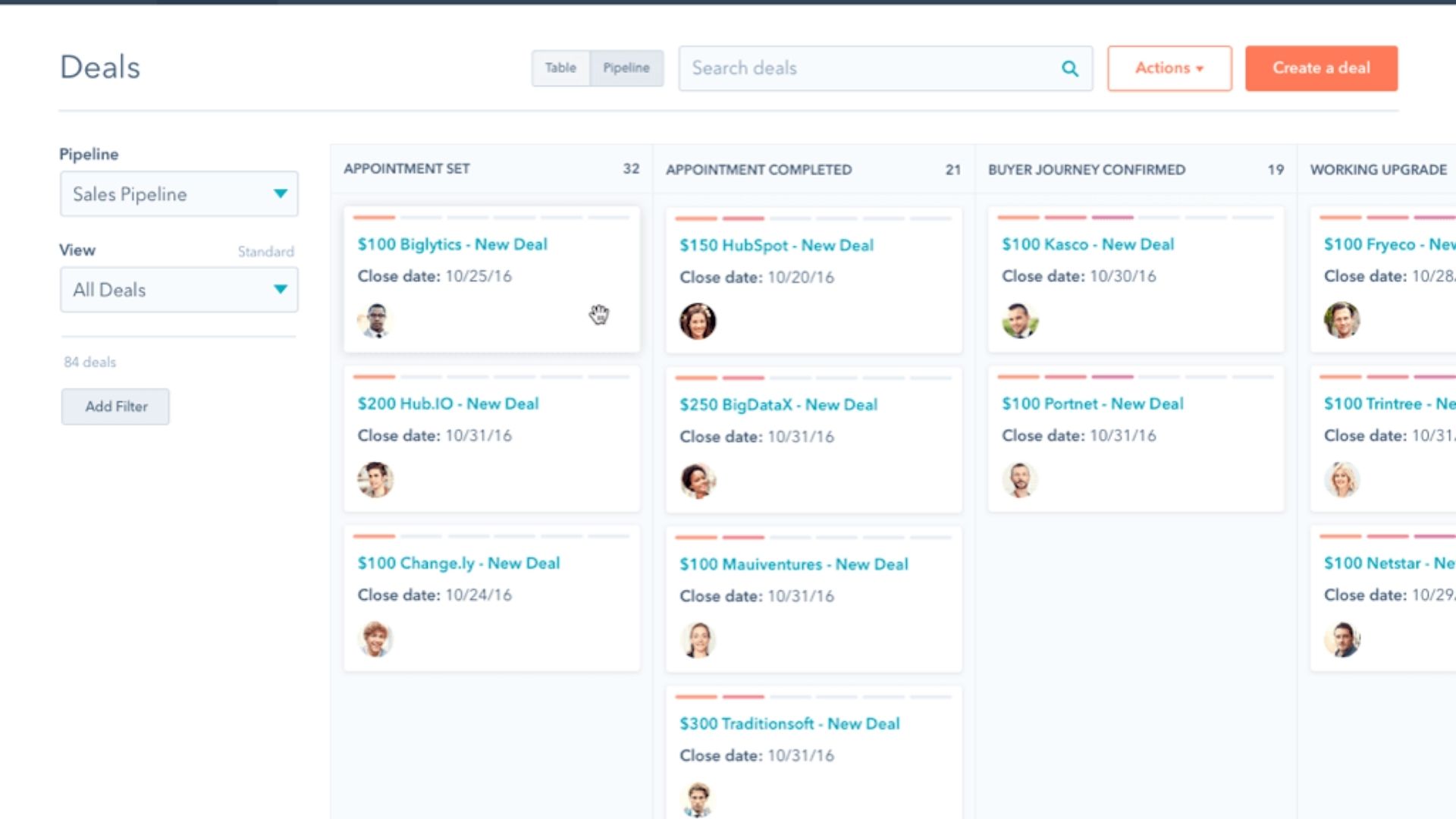
How is a deal pipeline traditionally used?
Show every single sales opportunity, broken out into stages or milestones
Create a forecast of deal volume and total revenue that's coming in (or not)
Sales reps track opportunities and identify how to prioritize their time
Sales managers get a clear picture and are able to hold their reps accountable
Not good enough. Deal pipelines are more important than that.
If all we are doing is tracking and reporting on sales opportunities, then we're significantly underutilizing our deal pipeline. The deal pipeline is the major inflection point in your entire growth operation.The combined efforts of marketing and sales are designed to create opportunities that flow into the deal pipeline.
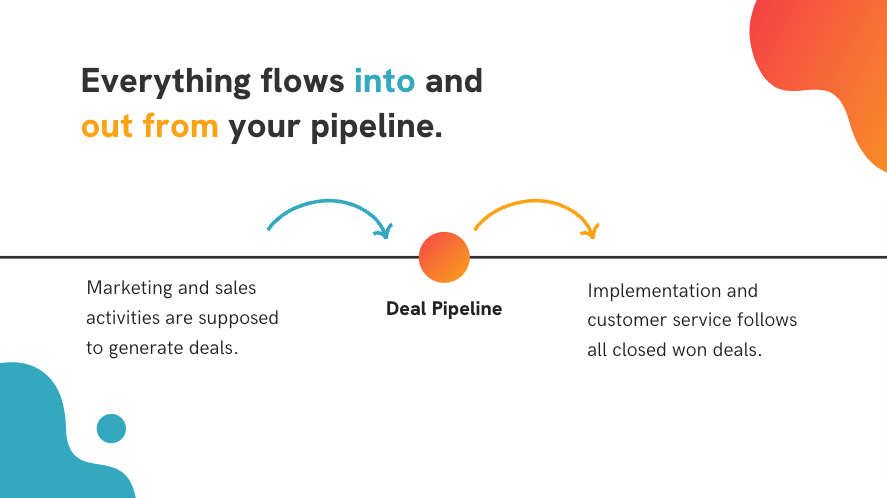
In fact, the deal pipeline impacts everyone.
Marketing
Everything that marketing does is designed to create and/or influence sales opportunities (also known as deals).
Sales
A deal pipeline is literally how a sales team tracks activities and performance and determines how to prioritize their time.
Implementation
Nothing happens until a sale is made. Implementation needs information quickly to get the onboarding process started.
Service
CS teams need to be able to reference what was sold (and how and why) and may be involved in up-sell or renewal opportunities.
Leadership
Executives need to know what's coming in and be able to analyze trends regarding which types of deals are closing (and which aren't).
Your deal pipeline should serve as a single source of truth for growth.
It should be built to accommodate any person or team that impacts customer acquisition and retention. And it should be optimized for all users (not just leadership).
So how does this happen?
Click on each box for more details and examples.
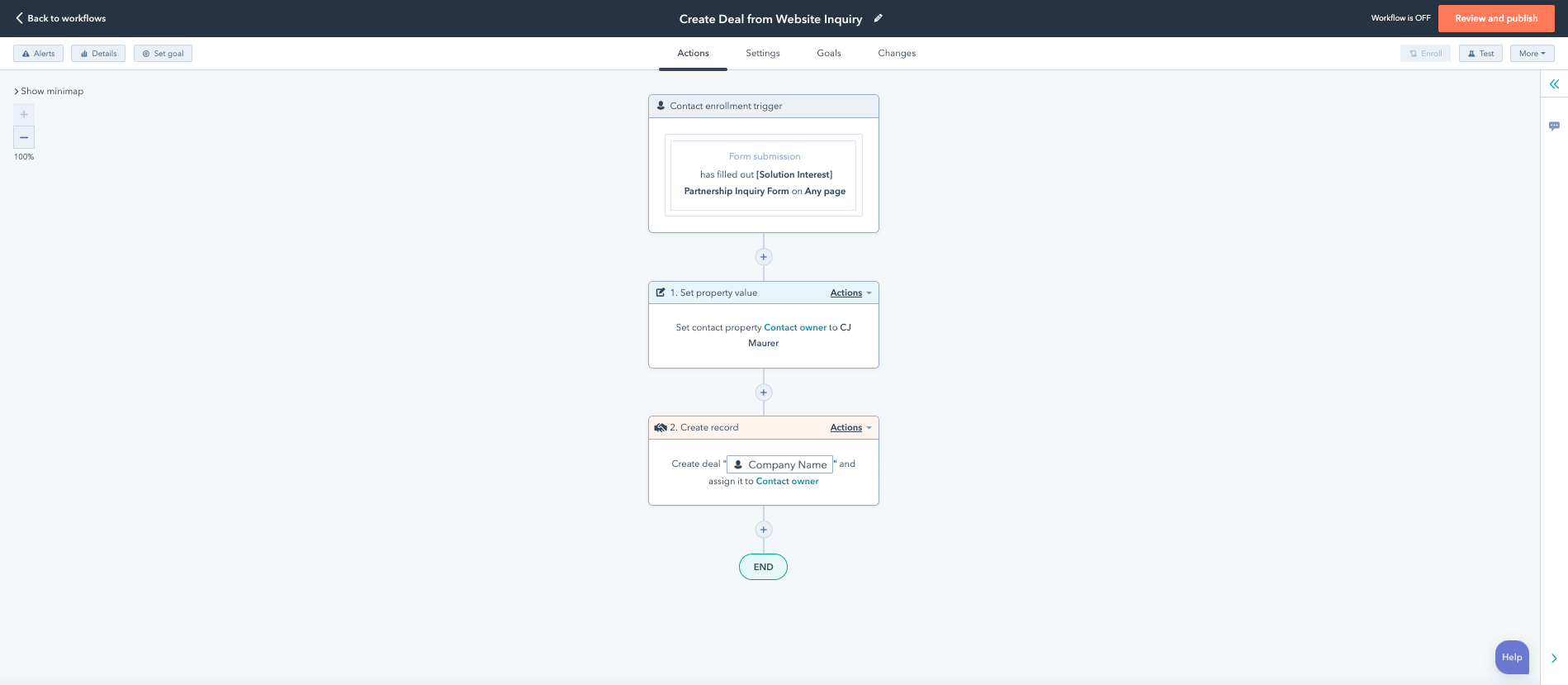
Create deals automatically from form submissions and other triggers.
Example: A prospect fills out a form on your website requesting a price quote or a software demo. So you use automation to create a deal, assign it to an owner, send an internal notification to the owner (or the whole sales team) and a follow-up or confirmation email to the prospect letting them know the sales rep will be following up with them soon.
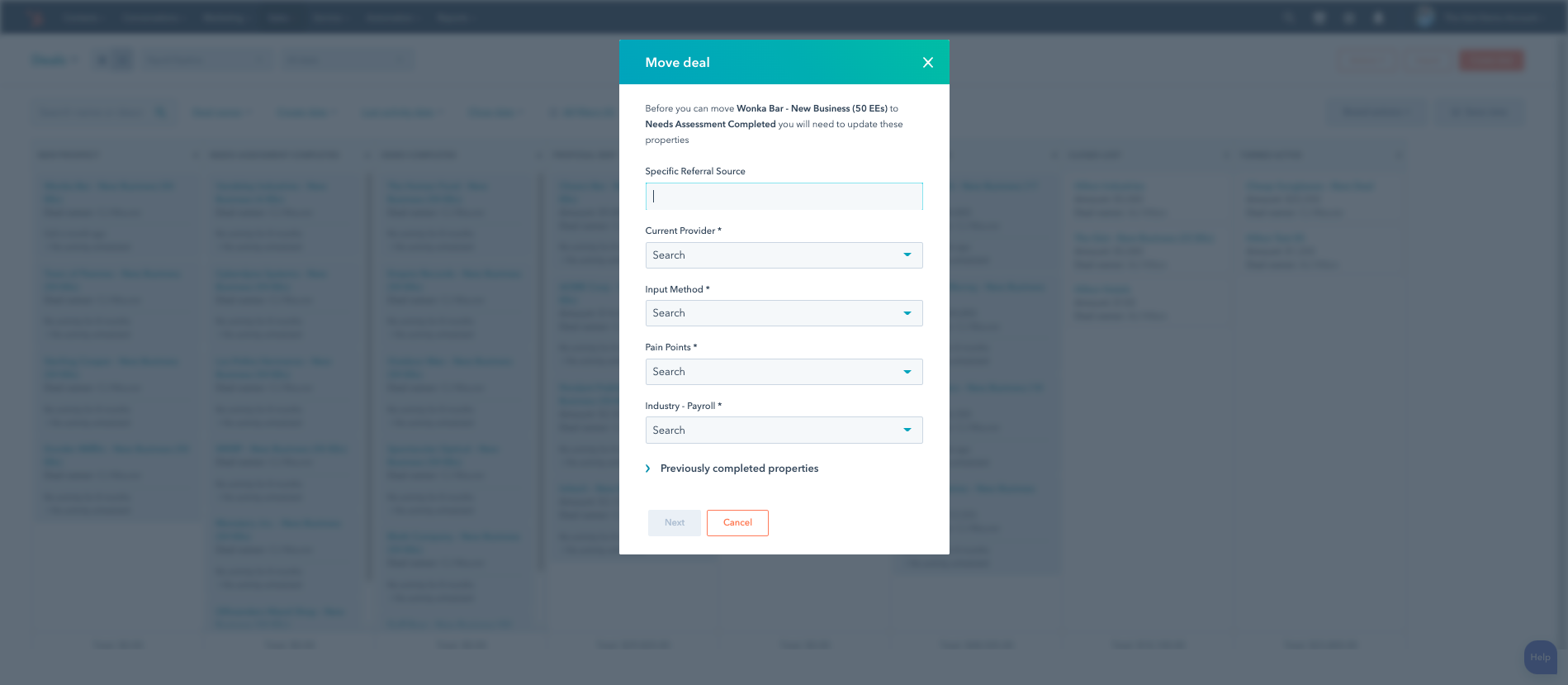
Require reps to capture vital information as they advance deals through the stages.
Example: For every stage in your pipeline, you determine which pieces of information a sales rep should have gathered in order to advance a deal into that stage. Then you configure your pipeline to require all reps to enter specific information when updating a deal to each stage.
Qualified & Working:
- Deal Owner
- Deal Type
- Source of Business
- Industry
Needs Analysis Completed:
- Pain Points
- Solution Interest
- Company Size
- Decision Maker(s)
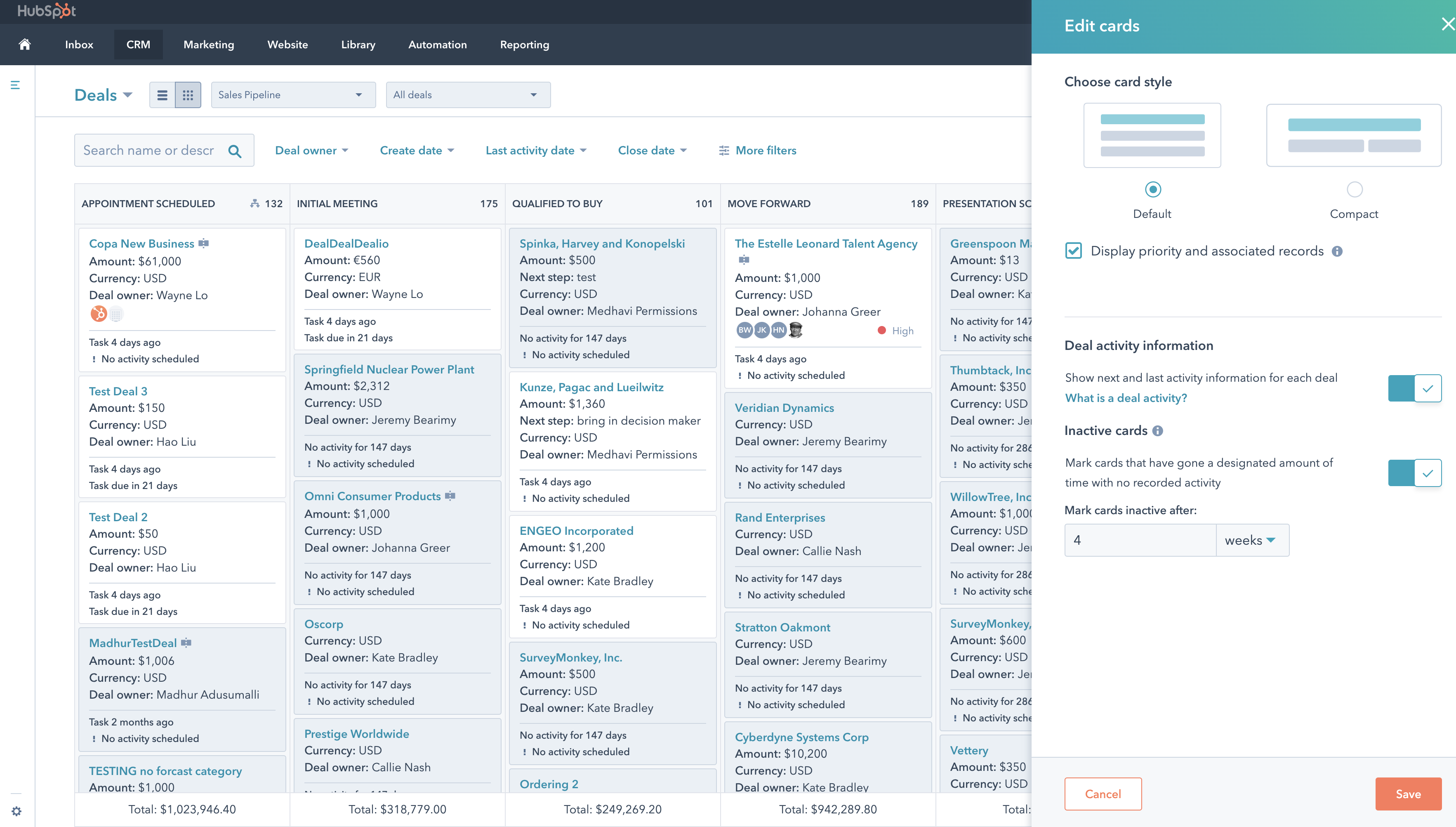
Escalate deals that haven't been updated for a significant period of time.
Example: A deal has remained in a certain stage for 14 days with no activity or updates. You have an automated workflow set up so whenever that happens, a task is created for the deal owner to review and/or update the deal. At best, this helps your reps make sure they don't lose track of an opportunity. At worst, it prevents your deal pipeline from getting cluttered up with stale deals.
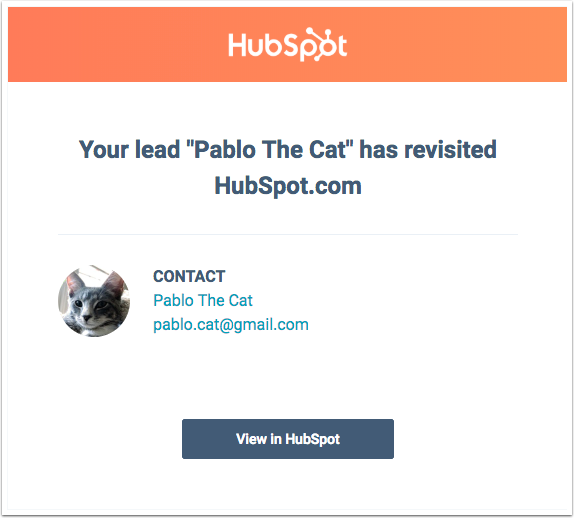
Notify reps when contacts associated with a deal exhibits a buying behavior.
Example: A contact is associated with a deal. Maybe your sales cycle is a little longer and there are "lulls" when your reps don't know when or how often they should be following up. Then let's say that contact visits your website or a specific page on your website, like a pricing page. Use automation to notify your reps when this happens so they can consider reaching out.
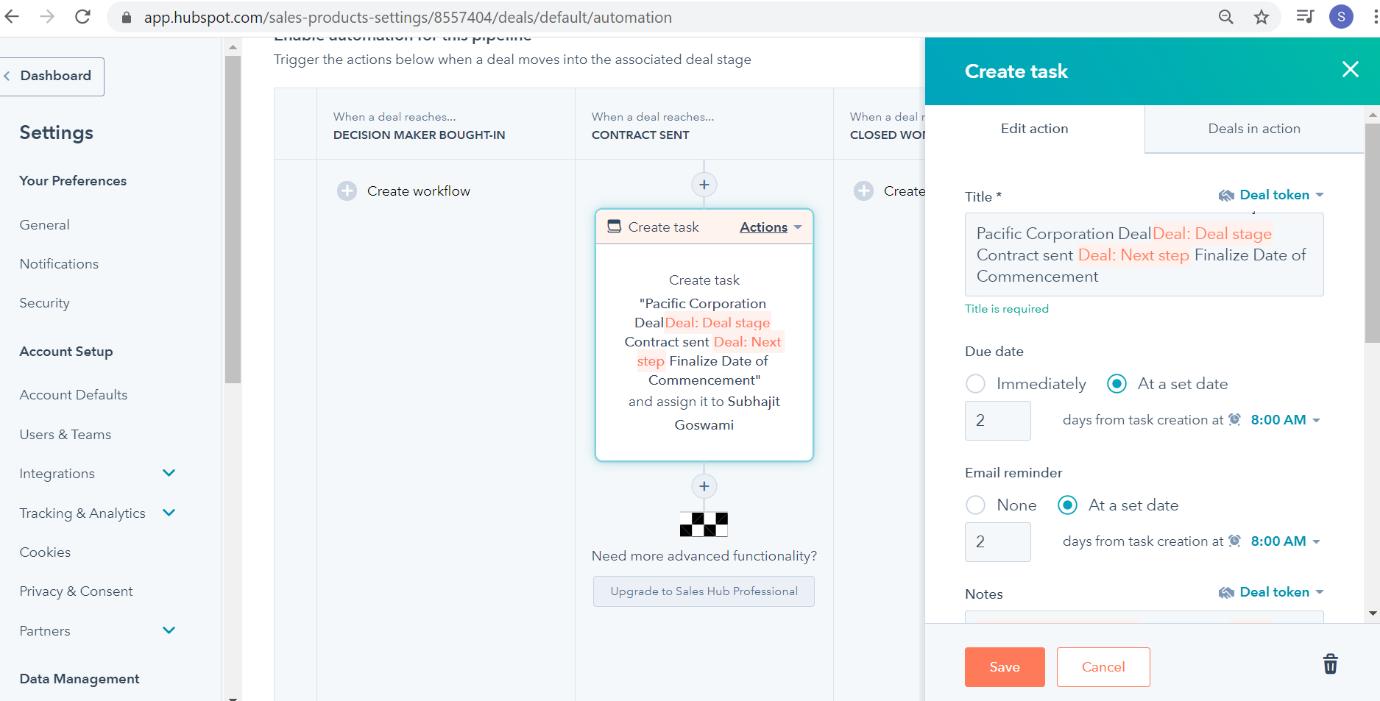
Automate notifications to managers and other team members when important milestones are reached.
Example: There are certain milestones during the sales process when managers or other team members should be notified. Use automation to make sure everyone stays in the loop, automatically.
- A needs analysis is completed
- A software demo is scheduled
- A proposal is sent
- The deal has been sent to finance for approval
- And much more
.png)
Capture information on closed lost deals to support lead nurturing and win-back attempts.
Example: Similar to your open/live deal stages, there is tremendous value in capturing some data when a deal is moved to closed lost. In many cases, it's a "no for now" and not a "no" forever. In these cases you'll want to look at the closed lost reason, if there is a win-back possibility and at what date your rep should follow-up. In this scenario, you can make sure your rep gets a task to follow-up whenever the follow-up date arrives.
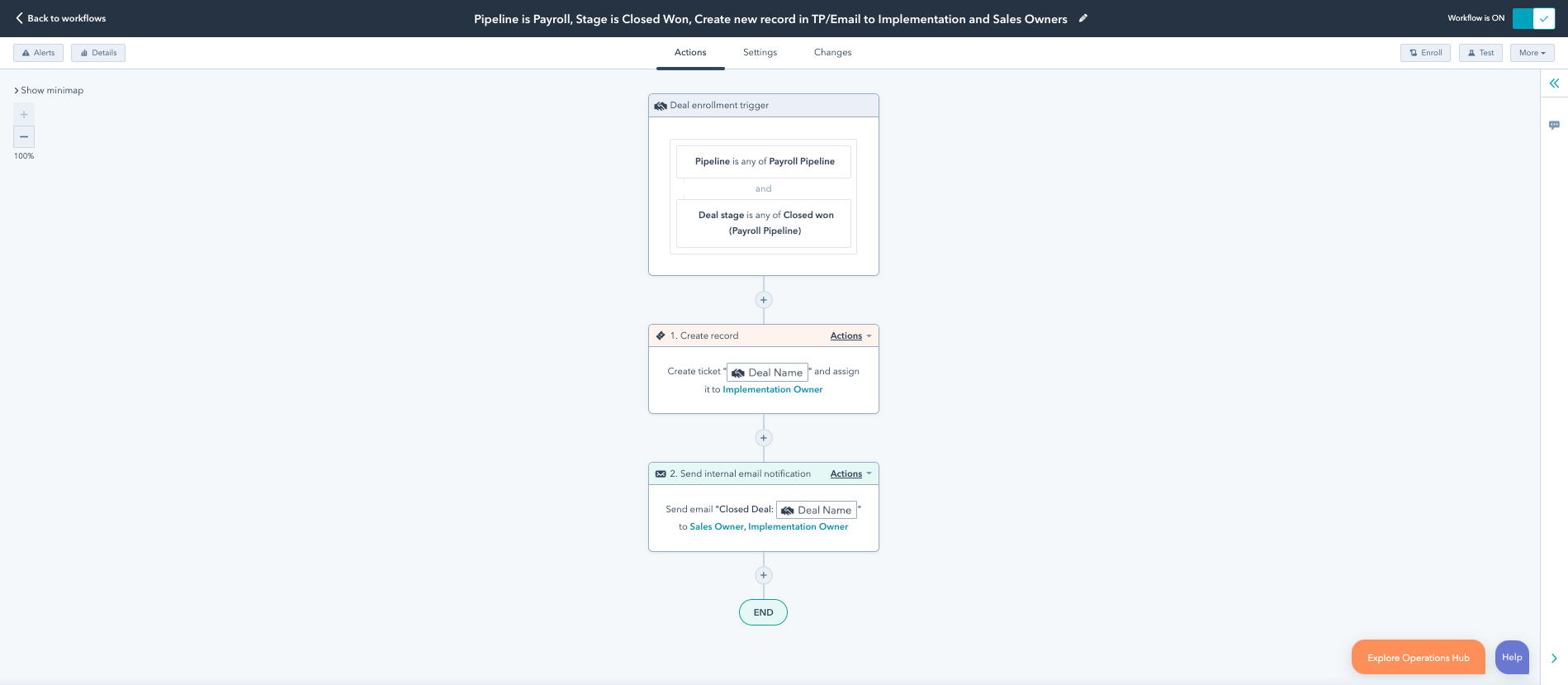
Facilitate a smooth handoff to your implementation and customer service teams.
Example: As soon as a deal is closed, it needs to be handed off to your implementation or customer service team to begin the onboarding process. Require your sales reps to capture all the relevant onboarding information in order to move the deal to closed won. Then, that triggers an automated email notification to the onboarding team and creates a ticket in the onboarding pipeline. You can even trigger external communication to the customer to keep them updated throughout the onboarding process.
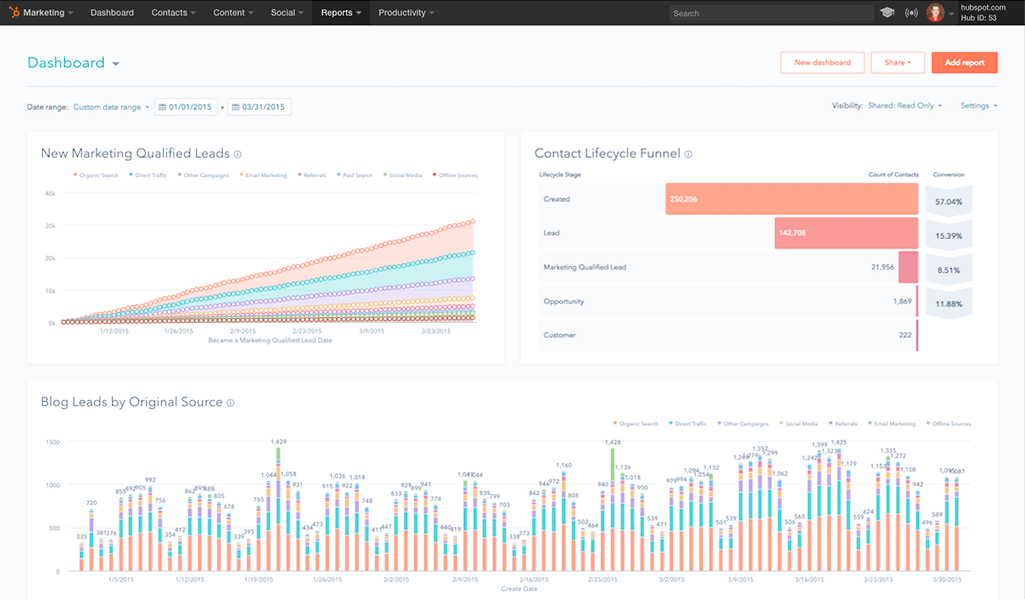
Build reports that provide visibility into the growth of your entire company.
Example: Since your entire company relates to your deal pipeline, there is data to analyze from your deal pipeline that impact all your teams.
- Deal forecasts, leaderboards and goal attainment
- Deals based on marketing campaign influence
- Deal inquiries broken down by job role or buyer persona
- Analyze deal win/loss rates based on company size, solution interest, lead source and more
- Analyze average time to close and at which stages deals may stall
- Analyze onboarding timelines based on source of business, company size, products sold, etc.
- And much more
Now let's make it happen.
Check out our Deal Pipeline Planning Workbook. It's a free tool built using Google Sheets that helps you map out how an ideal pipeline would be organized and configured. One tab has an example deal pipeline. The other tab is blank and ready for your ideas!
![[Workbook Template] Deal Pipeline Planner - Google Sheets](https://www.thegistinbound.com/hubfs/Images%20for%20Presentations/%5BWorkbook%20Template%5D%20Deal%20Pipeline%20Planner%20-%20Google%20Sheets.png)


We sincerely just want to help you.
We're making ourselves available for all 43North companies (and their friends and partners) for free CRM and deal pipeline consultations. Ask questions. Get a demo. Bounce ideas off us.
Whatever it is, we're here to help you. This is not a sales pitch disguised as something else. If you think you can benefit from more support, schedule your consultation now.
A little bit about us and what we believe.
The Gist is a leading inbound marketing agency and Certified HubSpot Solutions Partner for B2B software and service companies, especially in the payroll and HCM industry. We partner with bureaus all over the country to create inbound growth systems across marketing, sales and customer service functions.




.png)
.png)
.png)